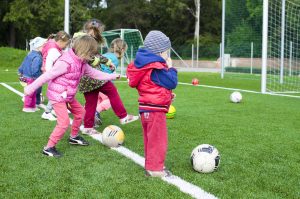
A diagnosis of low muscle tone is often given to individuals whose muscles appear less firm than usual. People with low muscle tone may appear to have “floppy” movements. They may also have poor posture and constantly slouch when sitting or walking.
Low tone is not a disorder. There is also no method of objectively measuring muscle tone. The term is widely used by doctors and therapists to describe children who present with postural and motor problems but they may or may not have no other known muscle or neurological disorders. Low muscle tone is also commonly present in kids with different developmental disorders such Down Syndrome and ADHD.
How can I help my child with low tone?
Help them engage in activities to build their muscle strength and increase their endurance:
For babies, these activities can include:
- Playing on their tummy: have your baby reach and grasp toys around them, and learn to shift their weight from one arm to the other while reaching for toys.
- Pulling up on objects like chairs or furniture, crawling up the stairs.
- Increasing their sitting tolerance: engage your baby in different activities while they sit independently.
For toddlers and children, you can help build their endurance through activities like:
- Playing sports: swimming, for example, is an excellent resistance sport for building muscle. It also puts no stress on the bones and joints.
- Throwing and kicking a ball, pushing chairs,
- Playground activities: going up (instead of sliding down) slides, jumping monkey bars.
Keep in Mind:
- Kids with low tone have to work twice as hard to complete an activity. They may need extra time to complete the same task.
- Fatigue can therefore be a big issue for kids with low tone, and kids may need frequent breaks.
- Because they have to work harder, increasing overall strength and endurance can take time. Patience is key.
How can OT help my low-tone child?
An OT will assess your child’s functioning and performance in their activities of daily living. An OT can help you learn strategies and suggest accommodations or modifications to your child’s environment or routine that will help improve their independence and efficiency.
OT’s do this by providing exercises to help target specific client-centered goals. For example: a school age student may need excercises to help improve their sitting posture at school, and accommodations to help them complete the tasks and activities they are expected to complete. While a younger child may need activities to help improve their gross motor skills like climbing or running.
This activities suggested in this post are not meant to diagnose or treat any conditions. Always consult your paediatrician regarding your child’s development.